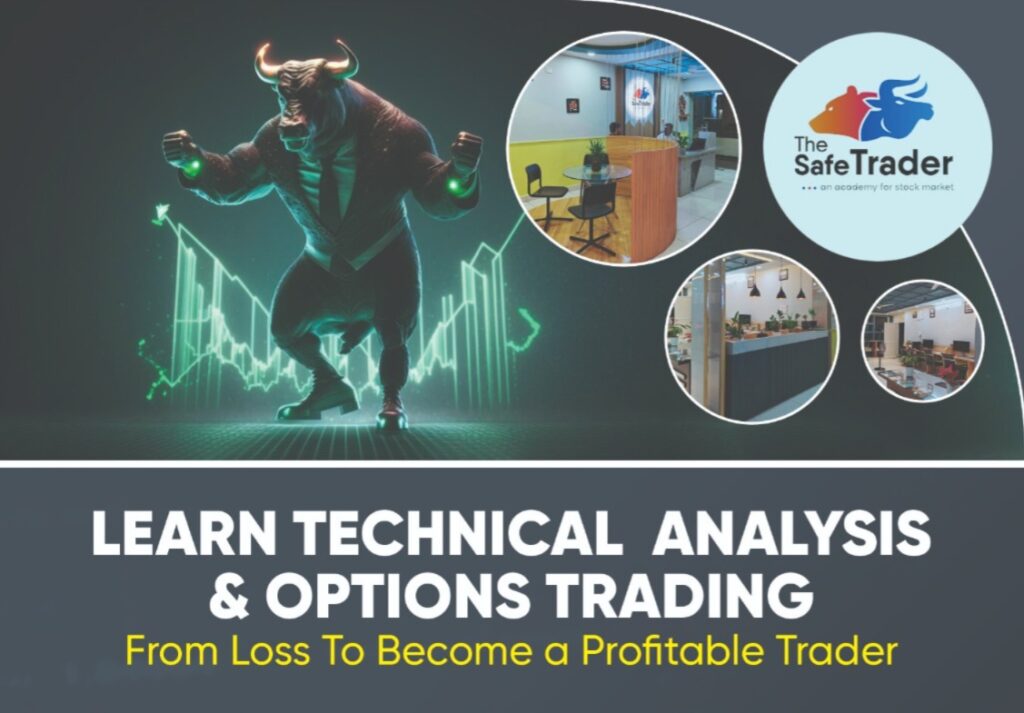Derivative Trading: A Comprehensive Guide
What is Derivative Trading?
In the Indian stock market, derivative trading has become an essential tool for traders and investors looking to manage risk and enhance their portfolio’s performance. Here at The Safe Trader Academy, Hyderabad, we specialize in equipping you with the knowledge and skills to navigate the complex world of derivatives trading with confidence. Our NISM-certified trainers bring extensive experience in equity, futures, options (F&O), and commodity trading, offering a comprehensive curriculum designed for both beginners and experienced traders.
Derivative trading involves contracts whose value is derived from an underlying asset. This underlying asset can be anything from stocks and commodities to currencies and indices. Derivatives provide a unique opportunity to speculate on market movements without directly owning the underlying asset.
Types of Derivatives:
- Options:
What is an Option?

Options are a type of derivative contract that gives the buyer the right (but not the obligation) to buy or sell an underlying asset at a predetermined price within a specific timeframe.
Types of Options
In the world of options trading, there are two primary types of options: calls and puts.
A call option gives the buyer the right to purchase the asset, while a put option gives them the right to sell it.
Call Option: The right to buy an asset at a specified price.
- Call Option: Gives the buyer the right, but not the obligation, to buy the underlying asset at a specified price (strike price) on or before a specific date (expiration date).
Put Option: The right to sell an asset at a specified price.
- Put Option: Gives the buyer the right, but not the obligation, to sell the underlying asset at a specified price (strike price) on or before a specific date (expiration date).
2. Futures: Contracts that obligate the buyer to purchase and the seller to sell an asset at a predetermined price on a future date.
These instruments include futures, options, forwards, and swaps.
What is a Future?
A futures contract is a derivative agreement to buy or sell an asset at a future date for a specified price. Futures are commonly used by investors to hedge risk or speculate on the direction of an asset’s price.
What is Open Interest in Future Trading?
Open Interest (OI) refers to the total number of outstanding derivative contracts, such as options or futures, that have not been settled. OI is crucial in gauging the strength of a price trend in futures trading.
Key Concepts
- Long Buildup: Indicates buying interest; implies bullish sentiment.
This indicates an increase in OI and price, suggesting bullish sentiment in the market.
- Short Buildup: Indicates selling interest; implies bearish sentiment.
An increase in OI accompanied by a decrease in price, often signaling bearish sentiment.
- Long Unwinding: Indicates selling of previously bought positions.
When traders start closing long positions, leading to a drop in both price and OI.
- Short Covering: Indicates buying of previously sold positions.
This happens when traders close short positions, which can push the price higher as the OI decreases.
What is an Option Chain?
An option chain, also known as an options matrix, displays all available strike prices and premiums for a specific underlying asset. It provides a snapshot of call and put options, helping traders analyze market sentiment, volatility, and price expectations.
A table showing the options available for a particular underlying asset, including strike prices, expiry dates, and their respective premiums.
Key Metrics in Option Chain Analysis:
- Open Interest (OI): The total number of open contracts for a particular option.
- Long Buildup: An increase in open interest for a call or put option, indicating increased buying activity.
- Short Buildup: An increase in open interest for a call or put option, indicating increased selling activity.
- Long Unwinding: A decrease in open interest for a call or put option, indicating decreased buying activity.
- Short Covering: A decrease in open interest for a call or put option, indicating decreased selling activity.
- Put-Call Ratio (PCR): The ratio of put options to call options. A higher PCR indicates a bearish sentiment, while a lower PCR indicates a bullish sentiment.
What is Put-Call Ratio (PCR)?
The PCR is a sentiment indicator that compares the trading volume of put options to call options. A high PCR indicates a bearish sentiment, while a low PCR indicates a bullish sentiment.

- Theta Decay: The rate at which an option’s time value decays as it approaches its expiration date. Theta decay refers to the gradual erosion of an option’s value as it nears its expiration date. It’s an essential factor for options traders, especially those using short-term strategies.
- Delta: Measures the sensitivity of an option’s price to changes in the price of the underlying asset. For example, a delta of 0.5 means the option’s price is expected to move 50% of the movement of the asset price.
Importance of Volume and Strike Price Selection
- Volume: A high volume of trading in an option indicates strong interest from market participants. Volume in an options chain represents the total number of contracts traded during a given period. High volume indicates strong interest in a particular strike price and can help confirm trends.
- Strike Price Selection: Choosing the right strike price is crucial. Consider factors like the underlying asset’s volatility, market sentiment, and your risk tolerance.
In-the-money, at-the-money, and out-of-the-money strike prices each have their advantages.
- Implied Volatility (IV): Represents the market’s forecast of a likely movement in the underlying asset’s price. Higher IV indicates higher expected fluctuations and can lead to higher option premiums.
- Change in OI: Tracks the change in the number of open contracts, providing insights into market sentiment. Change in OI helps traders track shifts in sentiment by comparing the current OI with previous levels. An increase or decrease in OI provides insights into the positions held by traders in the market.
Identifying Support & Resistance using OI Data:
Traders use OI data to identify key support and resistance levels. High OI at a particular strike price indicates strong support or resistance.
By analyzing OI at various strike prices, traders can identify significant support and resistance levels. High OI at a particular strike price suggests a strong barrier that the price may struggle to break.
Who are Options Writers/Sellers?
Options writers, or sellers, are traders who write (or sell) options contracts, earning the premium paid by the buyer. Options writers are obligated to fulfill the contract if the buyer exercises their option.
Options writers, also known as sellers, are market participants who create and sell option contracts. They generally have deeper pockets compared to option buyers.
Where Can I Get the Latest OI Data During Market Hours?
Real-time OI data is available through various financial platforms and brokerage services. Access to up-to-date OI information is critical for making informed trading decisions.
Why Choose The Safe Trader Academy?

At The Safe Trader Academy, we pride ourselves on our team of NISM-certified professionals, including Equity F&O Traders, Commodity Derivatives Traders, Investment Advisors, and Research Analysts. Our group of seasoned traders and trainers is dedicated to providing top-notch stock market training in Hyderabad and beyond.
- Multiple Branches: With over five branches across Telangana and Kalaburagi, quality education is accessible wherever you are.
- Comprehensive Curriculum: Our courses cover everything from the basics of derivative trading to advanced strategies in options and futures.
- Expert Guidance: Learn from industry experts with real-world trading experience.
Embark on your journey to financial mastery with The Safe Trader Academy. Our tailored programs and expert trainers are here to guide you every step of the way in the exciting world of derivative trading.
